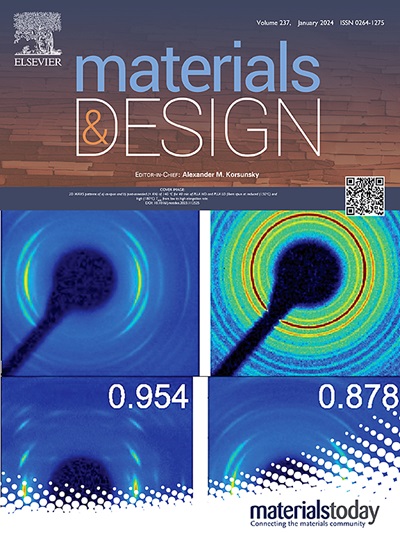Texture evolution in building direction of wire arc additive manufactured 316L stainless steel with high plasticity
IF 7.9
2区 材料科学
Q1 MATERIALS SCIENCE, MULTIDISCIPLINARY
引用次数: 0
Abstract
Crystallographic orientation in polycrystalline materials impacts multiple properties including fatigue resistance, stress corrosion cracking resistance, and elongation. Currently arc-based directed energy deposition, also known as wire arc additive manufacturing (WAAM), is used for 316L stainless steel (SS), offering high strength and ductility. However, process-induced defects, process parameters, and heat history can affect the quality of the material. In this study, the selection of gas metal arc welding as the heat source, followed by air cooling, was made for the fabrication of 316L SS components on a low-carbon steel substrate, aiming to optimize the manufacturing process. Ex-situ and in-situ tensile tests were performed. The microstructure of the WAAMed 316L SS is composed of nano α’, nano MnSiO3, and columnar γ with a dominant growth direction of {001}. When tested along the building direction (BD) the material possessed excellent elongation up to 95 % strain, while in the radial direction (RD) an increase in yield strength was observed. The BD sample exhibits reorientation with increased strain, with dominant textures being {113} < 631>, {114} < 841>, {123} < 013>, and {123} < 391 > . The deformation process is governed by dislocation slip, with multiple slip systems activated.

丝弧添加剂制备高塑性316L不锈钢的织构演变
多晶材料的晶体取向影响多种性能,包括抗疲劳性能、抗应力腐蚀开裂性能和伸长率。目前,基于电弧的定向能沉积,也称为电弧丝增材制造(WAAM),用于316L不锈钢(SS),具有高强度和延展性。然而,工艺缺陷、工艺参数和热历史会影响材料的质量。本研究在低碳钢基体上制备316L SS部件,采用金属气体保护弧焊为热源,然后风冷的方法进行工艺优化。进行了非原位和原位拉伸试验。WAAMed 316L SS的微观结构由纳米α′、纳米MnSiO3和柱状γ组成,生长方向以{001}为主。当沿着建筑方向(BD)测试时,材料具有优异的延伸率,达到95%应变,而在径向(RD)方向上,观察到屈服强度的增加。随着应变的增加,BD样品呈现出重新取向的特征,主要织构为{113}<;631>, {114} <;841>, {123} <;013>;和{123}<;391比;. 变形过程受位错滑移控制,激活了多个滑移系统。
本文章由计算机程序翻译,如有差异,请以英文原文为准。
求助全文
约1分钟内获得全文
求助全文
来源期刊

Materials & Design
Engineering-Mechanical Engineering
CiteScore
14.30
自引率
7.10%
发文量
1028
审稿时长
85 days
期刊介绍:
Materials and Design is a multi-disciplinary journal that publishes original research reports, review articles, and express communications. The journal focuses on studying the structure and properties of inorganic and organic materials, advancements in synthesis, processing, characterization, and testing, the design of materials and engineering systems, and their applications in technology. It aims to bring together various aspects of materials science, engineering, physics, and chemistry.
The journal explores themes ranging from materials to design and aims to reveal the connections between natural and artificial materials, as well as experiment and modeling. Manuscripts submitted to Materials and Design should contain elements of discovery and surprise, as they often contribute new insights into the architecture and function of matter.
 求助内容:
求助内容: 应助结果提醒方式:
应助结果提醒方式:


